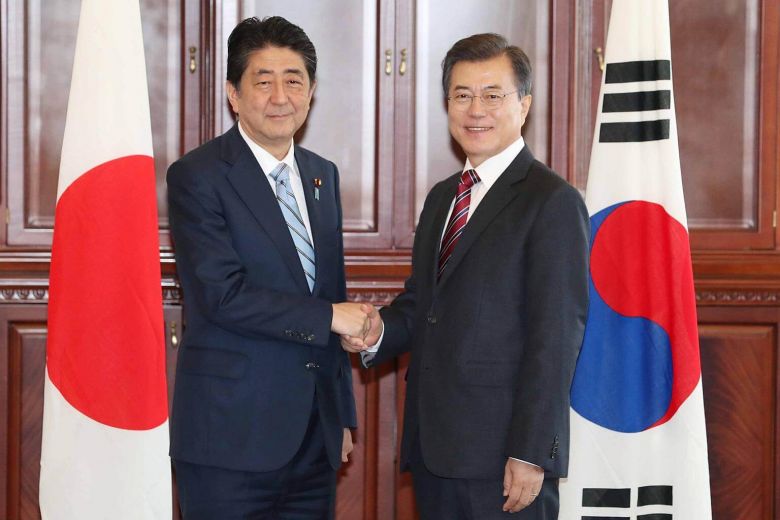During the two months, tensions between Japan and South Korea have escalated from a seemingly minor trade dispute regarding export restrictions to intense animosity between the two neighbors. Currently, many South Koreans have embraced the complete boycott of Japanese products, while others have participated in protests in front of the Japanese embassy. President Moon Jae-in himself has addressed several stern warnings against Japan. But these recent events only illustrate a fragment of Japanese-South Korean relations—they are simply the latest to happen in a long history marked by the waxing and waning in hostility between the two countries. To understand the full extent of the current situation, it is imperative that the historical context and economic implications are examined as well. Here is everything you need to know about the Japan-Korea trade war, from the two countries’ 1965 deal regarding forced laborers to Japan’s removal of Korean from its whitelist:
1. HISTORY
Years of hostility between the two neighboring countries centered mostly on disagreement over how to compensate victims of Japanese war crimes during the Second World War, including young Korean women forced into sexual slavery known as “comfort women” and forced mine laborers. The conflict was seemingly resolved in 1965, when South Korean President Park Chung-hee forged a treaty with Japan that settled the issue of compensation for the very first time. However, most of the money given by Japan to Korea was used to fund government projects, and only 300,000 won per death was compensated to each victim, according to the Chosun Ilbo. Additionally, because only the Japanese government reimbursed the sum of money, and the private corporations involved in supervising the forced labor did not make any attempts at compensation, many South Korean victims and their families were dissatisfied with the deal.
2. THE TURNING POINT
By 2018, the conundrum remained unsolved. Many South Koreans tended to view all former deals regarding forced labor repayment as inadequate, while many Japanese citizens believed the issue to be already resolved. A Korean Supreme Court ruling in October of that year suddenly hurled the decades-old debate into the public limelight once again. The Court ordered that Mitsubishi Heavy Industries, a Japanese engineering and electronics company, repay 10 Korean former forced laborers. The Japanese government criticized this action, affirming their belief that the forced labor compensation issue had already been settled through the 1965 deal. Ultimately, the 2018 Supreme Court case set in motion a chain of events that would eventually escalate into a trade dispute between the two former allies.
3. ESCALATION OF CONFLICT
A year passed before Japan finally committed its act of retaliation. This June, Tokyo hit South Korea with a series of sanctions on chemicals crucial to Korea’s semiconductor industry. At first, the link between the sanctions and the 2018 Supreme Court ruling seemed tentative at best. Even the Japanese government claimed that the sanctions had been issued as a response against South Korea’s supposed shipping of potentially dangerous chemicals to North Korea. But when it was revealed that South Korea had not colluded with its northern counterpart in this manner, it became clear that the sanctions were imposed in response to the Supreme Court case. These regulations, which limit the export of chemicals used to produce semiconductors, have grave implications on South Korea’s electronics industry, most notably chip making giant Samsung.
4. EFFORTS AT RECONCILIATION
As tensions escalated further and Japan officially removed South Korea from its “white list,” a list of countries that Japan grants special trade privileges to, the Trump administration decided to step in and attempt to mitigate the situation. Secretary of State Mike Pompeo led a trilateral meeting in Bangkok, joined by South Korean Foreign Minister Kang Kyung-wha and Japanese Minister for Foreign Affairs Taro Kono. The meeting, which took place in between sessions of the ASEAN Regional Forum held in Bangkok, yielded no fruit for the parties involved. While heated exchanges from Kang and Kono could be heard, there was no progress in deescalating the conflict or reversing the sanctions set by Japan.
5. IMPLICATIONS FOR THE FUTURE
As two integral components of the United States’ Indo-Pacific strategy, Japan and Korea have the power to spawn dangerous consequences if at odds. With North Korea and China posing as constant threats against the US in East Asia, the US has relied heavily on its alliances with Japan and Korea to counter the two authoritarian regimes at a closer distance. But as Japan and Korea continue to demonstrate increasingly adversarial behavior toward one another, this trilateral alliance seems to be weakening. North Korea has already seized this opportunity, declaring that it will no longer pursue peaceful dialogue with its southern neighbor, but will only answer to dialogue from the United States. Such words indicate that North Korea plans to intentionally ostracize South Korea, altering its foreign policy once again after failing to reach any real compromise with the Moon administration despite months of discussion. Whatever the case may be, one thing is clear: continued hostile relations between Japan and Korea will not only have national implications, but they will also have very real and far-reaching across the globe.

